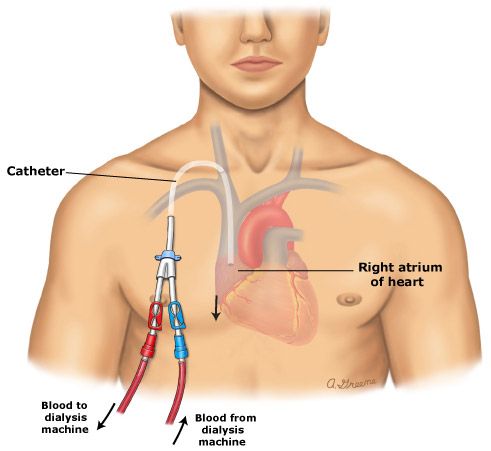Thanks to everyone who left such sweet, kind, and supportive words in response to my post yesterday on Facebook. Some of you might be interested in hearing a little more about the specifics of the bone marrow transplant (BMT) I’ve started.
The cancer I have (multiple myeloma) is a cancer that affects plasma cells. Like all blood cells, plasma cells are produced by bone marrow. The purpose of the BMT is to completely replace the existing bone marrow with a brand new bone marrow, through the use of stem cells. The BMT procedure harvests stem cells from the blood and stores them, then kills off the existing bone marrow and reintroduces the harvested stem cells into the blood. The reintroduced stem cells travel back to the empty bone marrow space and recreate a brand new bone marrow, which produces non-cancerous blood cells.
The BMT process has two phases. The first phase’s goal is to harvest stem cells. Stem cells are normally located in the bone marrow rather than in the bloodstream. To force my stem cells out of the bone marrow and into the blood, I’ll be given a chemotherapy agent called Cytoxan and injections of a drug called Neupogen. Neupogen is a drug that causes bone marrow cells — including stem cells — to grow much faster than they normally would. Cytoxan is a chemo agent that kills off bone marrow cells. By first using Cytoxan, space in the bone marrow is created for the new cells (including stem cells) that Neupogen causes to grow.
Unfortunately for BMT patients like me, both of these drugs have side effects. Cytoxan has the normal side effects associated with chemotherapy drugs (nausea, vomiting, diarrhea, fatigue, hair loss, risk of infections, etc.) The infection risk is particularly important, and requires the BMT patient to stay isolated, to eat only cooked or processed foods, and to wear a mask that filters out bacteria and viruses whenever the patient is outside the house. Perhaps some of you will have the pleasure of seeing me in my dorky mask. I’ve seen patients trick out their masks with things like SF Giants patches, so maybe I’ll get one and won’t look quite as dorky as would otherwise be the case.
The biggest side effect of Neupogen results from its intended purpose: By forcing all the cells in the bone marrow to grow at a much-faster-than-normal rate, Neupogen creates a situation in which there is not enough room inside the bones to house all the cells. This creates an internal pressure that causes bone and joint pain. I’ve had enough of that to last me awhile and am not looking forward to more.
To facilitate the introduction of chemotherapy agents and the harvesting and reintroduction of stem cells, today I was outfitted (if that’s the right word) with a central venous catheter. It looks like this:

The procedure I had this morning to put it in wasn’t too bad (the science/art of conscious sedation being what it is today), aside from having to go with no coffee until after the procedure was done. But I do now have two larger-than-I-thought-they’d-be tubes hanging out of the left part of my upper chest. I’ll spare you all a picture of those; they are quite similar to the ones in the picture above.
Tomorrow I start the bad part of the first phase, 9 hours of chemo and fluid infusion. Not a great way to spend a Saturday. On Sunday I have to go back for another 4 hours of fluids. In between, I have to carry a portable pump that will constantly infuse fluids through the catheter. The fluids are necessary because Cytoxan can cause bladder infections, and that risk can be reduced by cycling as much fluid through the bladder as possible.
On Monday, I can come back home to Santa Rosa, but I have to get daily injections of Neupogen from Suzie. In about a week, I have to go into Kaiser for daily blood draws, the purpose of which is to see how many stem cells there are in my blood as a result of the Neupogen. When the folks at Stanford say there are enough, I have to return to Stanford for the collection of stem cells. From what I’m told, the main side effect of this is boredom, as you have to sit for several hours hooked up to a machine for several consecutive days, until a sufficient number of stem cells are harvested. The harvested cells are preserved by freezing them.
After this step (called apheresis), Phase One is over, and I get a break of about 10 – 14 days before Phase Two begins. Phase Two is a much riskier, and has much more painful and uncomfortable side effects, so I’ll leave that for another post.
So far, the treatment team and the staff at the Stanford Cancer Center have been wonderful — an excellent combination of efficient, kind, supportive, funny, and extremely competent. I’m in very good hands down here.
Keep those good thoughts coming. One day in, things are good, and I have no reason to think that will change. But as shown by the fact that I’m having to be here, you never really know.
Categories: Blogging
